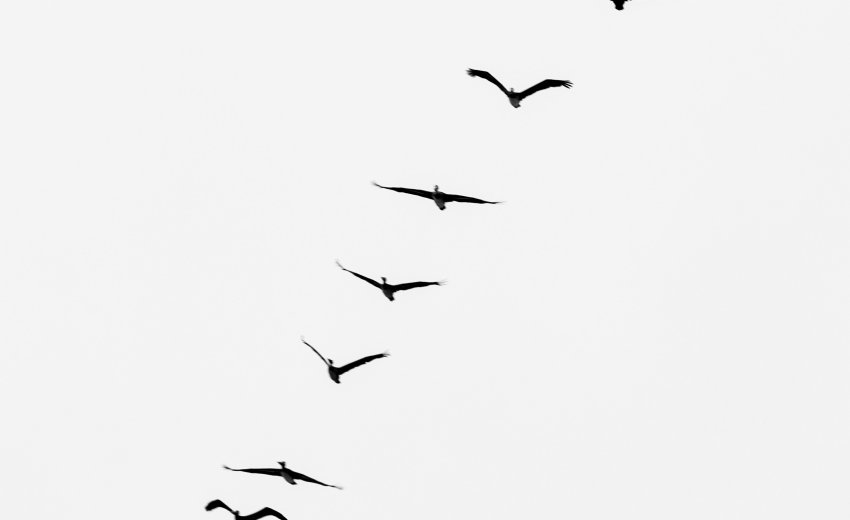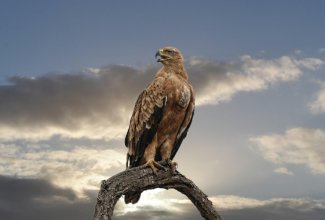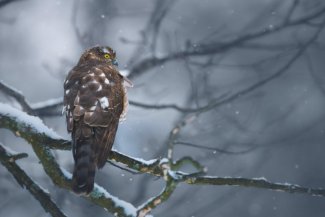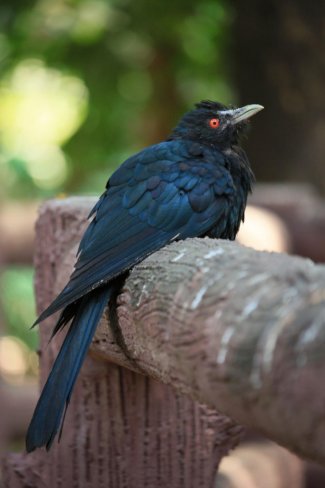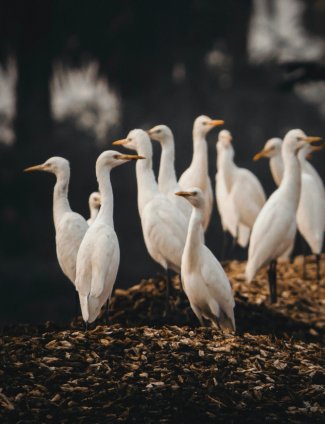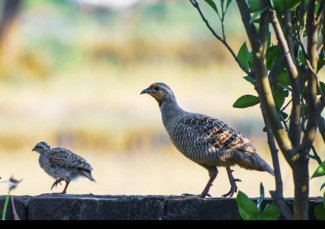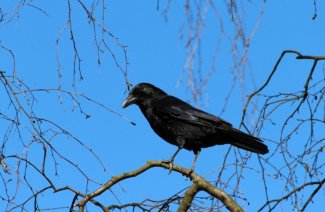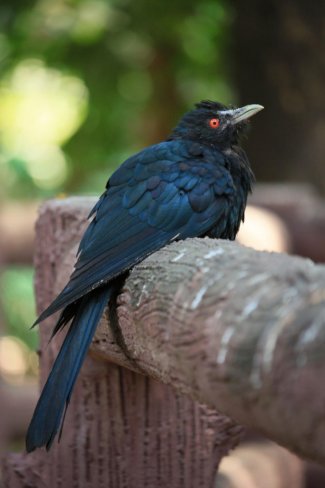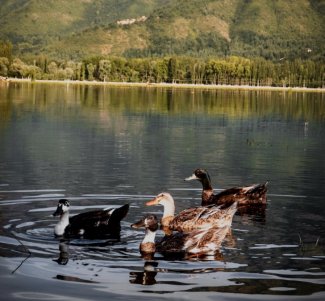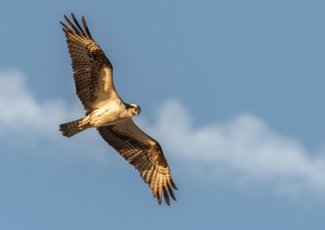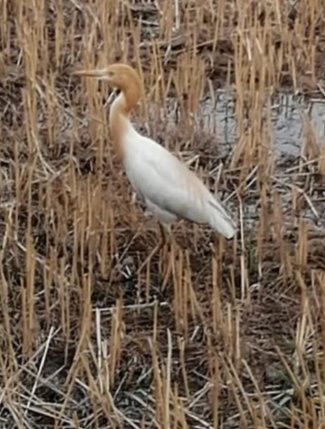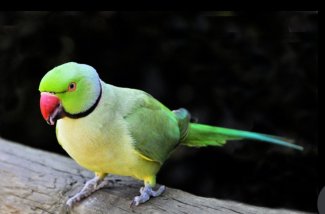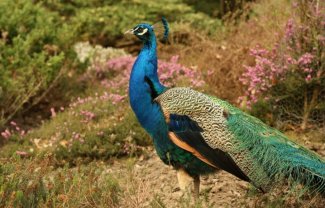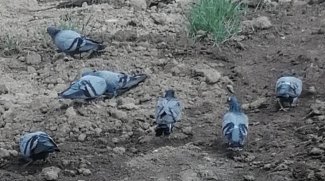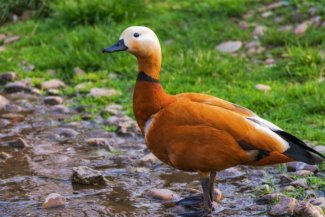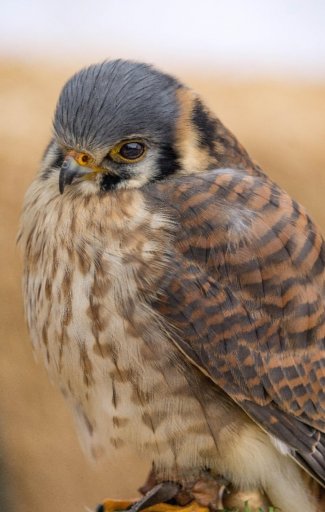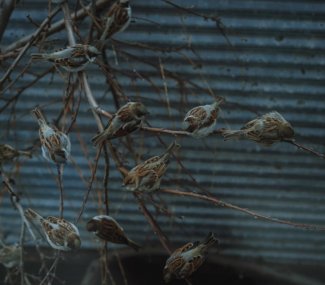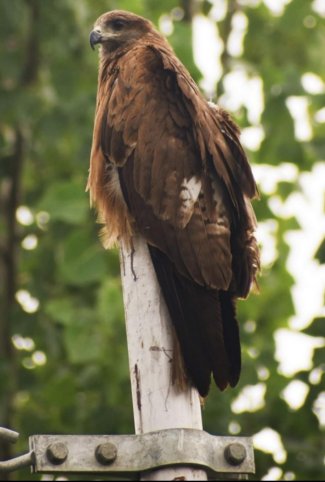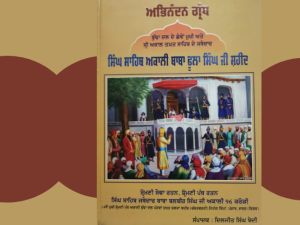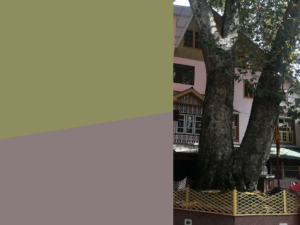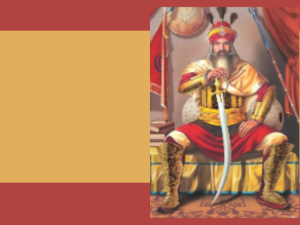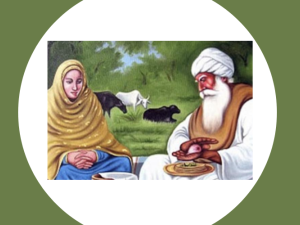Guru Nanak Sahib had a vast knowledge of the flora and fauna of this vast subcontinent. Guruji's hymns, as incorporated in Guru Granth Sahib, reflect a naturalist's understanding. Guru Sahib has made use of ornithological similes and metaphors frequently to bring home his transcendental flights.
In this universe, all vertebrate animal life is divided into two classes, viz the warm blooded animals and the cold blooded animals. The warm blooded animals are sub classified into mammals who are covered with hair, bear live young and suckle them. All the birds are covered with feathers, lay eggs, and as a natural rule, incubate them with the heat of their bodies.
Avians or Birds are the only feathered creatures in the world. In general outlook, all the birds display common characteristics, they fly, build nests and lay eggs. A closer investigation shows that bird life includes many forms. Aristotle and Linnaeus naturalists of the 18th century laid down some modifications which are universally being applied till date. All the bird life is divided into 27 main orders. These orders are again divided into families, then families into genus and finally genera into species. In South Asia alone, there are 2,000 species of birds.
The hymns of Guru Nanak mention more than a dozen birds . We will discuss them here.
BASHA:
Basha is generally known as a bird of Prey.
These prey birds come in the category of Hawk,Sparrow Hawk,and Falcon.
ਊਹੀ ਤੇ ਹਰਿਓ ਊਹਾ ਲੇ ਧਰਿਓ ਜੈਸੇ ਬਾਸਾ ਮਾਸ ਦੇਤ ਝਾਟੁਲੀ ॥ (1216-7)
oohee tay hari-o oohaa lay Dhari-o jaisay baasaa maas dayt jhaatulee.
You move things from here to there, like the hawk swooping down on the flesh of its prey.
(SGGS. 776)
SEECHAANAY:
A yellow-eyed bird of prey (which preys on small birds) smaller than a hawk and larger than a Shikra.
In Persian , it is known as Seechaarna .Sometimes in a wider sense, it is mentioned as a bird of Prey.
ਸੀਚਾਨੇ ਜਿਉ ਪੰਖੀਆ ਜਾਲੀ ਬਧਿਕ ਹਾਥਿ ॥ (55-10)
seechaanay ji-o pankhee-aa jaalee baDhik haath.
Think of the hawk preying on the birds, and the net in the hands of the hunter.
BIRDS:-
Guru ji generally used birds in similes and metaphors to describe flight to heavens.
ਪੰਖੀ ਹੋਇ ਕੈ ਜੇ ਭਵਾ ਸੈ ਅਸਮਾਨੀ ਜਾਉ ॥ (14–13)
ਨਦਰੀ ਕਿਸੈ ਨ ਆਵਊ ਨਾ ਕਿਛੁ ਪੀਆ ਨ ਖਾਉ ॥ (14-14)
pankhee ho-ay kai jay bhavaa sai asmaanee jaa-o.
nadree kisai na aav-oo naa kichh pee-aa na khaa-o.
If I was a bird, soaring and flying through hundreds of heavens,and if I was invisible, neither eating nor drinking anything
(Further References SGGS 60,143,148, 152,465, 470,505, 558,839
1010, 1330)
KOEL
The family of Koel is the same as that of Papiha. The voice of Koel is very sweet. This melodious black colored bird also preys on crows. Its size is up to 42 cm.
The female bird just kicks-kick-kick and the male bird goes coo-coo-coo. This bird has a long tail. The male bird is completely black with yellow-green beak and red eyes. This bird keeps breaking eggs and nests of small birds. It takes care of its own family. The nest is large and in the middle of the tree.
ਕਾਲੀ ਕੋਇਲ ਤੂ ਕਿਤ ਗੁਨ ਕਾਲੀ ॥ (794-12)
kaalee ko-il too kit gun kaalee.
O black bird, what qualities have made you black?
COUCAL:
Kokila (Coucal) is 47 cm long. This bird is also black color .It thrives near water. Coucal is fond of eating eggs and young ones. This bird's own nest Self-build, which is preserved in dense foliage/trees. Its claws are straight.
ਕੋਕਿਲ ਹੋਵਾ ਅੰਬਿ ਬਸਾ ਸਹਜਿ ਸਬਦੁ ਬੀਚਾਰੁ ॥ (157-4)
kokil hovaa amb basaa sahj sabad beechaar.
If I were to become a cuckoo, living in a mango tree, I would still contemplate the Word of the Shabad.
CRANE:-
The cranes come under Gruiformes order. Its martial devotion had become legendary in our folk-lore.
There are six species in the family Gruidae, viz. Sarus crane, common crane, Demoiselle crane, Siberian crane. According to a naturalist, "Call: A loud, musical, high pitched trumpet of far reaching quality. The dim of a great concourse of Koong taking off the ground with their 'Kurr Kurr' calls uttered in varying keys has been aptly likened to the distant rearing of the sea."
Guru Sahib has used metaphors of crane for its habits bath, swan net. etc.
ਹੰਸ ਸਿ ਹੰਸਾ ਬਗ ਸਿ ਬਗਾ ਘਟ ਘਟ ਕਰੇ ਬੀਚਾਰੁ ਜੀਉ ॥
ਤੂੰ ਸਭਨੀ ਥਾਈ ਜਿਥੈ ਹਉ ਜਾਈ ਸਾਚਾ ਸਿਰਜਣਹਾਰੁ ਜੀਉ (438-4)
hans se hansaa bag se bagaa ghat ghat karay beechaar jee-o.
tooN sabhnee thaa-ee jithai ha-o jaa-ee saachaa sirjanhaar jee-o. ||1||
He calls a swan a swan, and a crane a crane; He contemplates each and every heart.You are everywhere, wherever I go, O True Creator Lord. ||1||
(SGGS 470,663,753,1171,1275)
CHAKOR:
Chakor is a popular bird which is also called hill partridge. Female of Chakor is called Chakori. Its legs are red. Poets have described its love with the moon. In the olden days, kings used to rear chakaurs with love and kept edible items in front of the chakaurs. Seeing them on, they would eat them if there was no ill effect, the belief was that if there was poison in the food, then the seeing eyes of Chakor would turn red and immediately used to die.
That is why Chakors name is 'Visvanathan Mrityak'. Many poets have described Chakor as an ember eater. Its size is up to 37 cm. It is considered among the fighting birds.
ਮਨਿ ਪ੍ਰੀਤਿ ਚੰਦ ਚਕੋਰ ॥ (838-9)
man pareet chand chakor.
My mind loves You, as the partridge loves the moon,
( SGGS. 658)
CROW:-
The crow is a familiar Indian bird. The house crow, Kowwa or Kian comes from the family Corvidae.
Guru ji mentioned crows' natural habits, its colour and its relevance with human beings.
ਝੂਠੇ ਕਉ ਨਾਹੀ ਪਤਿ ਨਾਉ ॥ (839-11)
ਕਬਹੁ ਨ ਸੂਚਾ ਕਾਲਾ ਕਾਉ ॥ (839-12)
jhoothay ka-o naahee pat naa-o.
kabahu na soochaa kaalaa kaa-o.
The false one has no honor or fame;
KOEL (CUCKOO)
The family of Koel is the same as that of Papiha. Its family name is cuculidae and order is cuculiformes. They have a cosmopolitan distribution.The voice of Koel is very sweet. This melodious black colored bird also preys on crows. Its size is up to 42 cm. The female bird just kicks-kick-kick and the male bird goes coo-coo-coo. This bird has a long tail. The male bird is completely black with yellow-green beak and red eyes. This bird keeps breaking eggs and nests of small birds. It takes care of its own family. The nest is large and in the middle of the tree.
Koel builds no nests of its own but deposits its eggs in crow's nests leaving them to be hatched, and the young ones to be reared, by the foster parents. Koel's song has been much lauded in romantic poetry as well. There are several species of cuckoos viz. Large hawk, pied crested, Indian plaintive, Indian cuckoo, Bay-banded, Indian drango, Sirker cuckoo. Its love for water and rain drops is well known.
ਕਾਲੀ ਕੋਇਲ ਤੂ ਕਿਤ ਗੁਨ ਕਾਲੀ ॥
ਅਪਨੇ ਪ੍ਰੀਤਮ ਕੇ ਹਉ ਬਿਰਹੈ ਜਾਲੀ ॥ (794-12)
kaalee ko-il too kit gun kaalee.
apnay pareetam kay ha-o birhai jaalee.
O black bird, what qualities have made you black?
( SGGS. 13,226, 504,567, 633,1108,1191,1274)
DUCK:-
It is a smaller bird of the family Anatidae. The prominent characteristics of a duct are short webbed feet, with a small hind not reaching the ground.
There are two species of ducks. Brahminy duck and Ferruginous duck.
Guru ji has beautifully mentioned its realistic habits.
ਜੈਸੇ ਜਲ ਮਹਿ ਕਮਲੁ ਨਿਰਾਲਮੁ ਮੁਰਗਾਈ ਨੈ ਸਾਣੇ ॥ (938-15)
jaisay jal meh kamal niraalam murgaa-ee nai saanay.
The lotus flower floats untouched upon the surface of the water, and the duck swims through the stream;
HAWK:-
Hawk is the bird of the falcon family. Hawk keeps a sharp lookout, perched bolt upright on bough amongst the foliage or on the canopy of some high standing near a forest clearing, for jungle fowl, pheasants, hares and other small animals coming out into the open.
It swoops down with a terrific rush, strikes and bears its prey away in its talons. There are different species of hawks, viz. Brown Lizard hawk, Crested Honey buzzard, Crested Goshawk, Besra sparrow hawk and long-legged Buzzard. Guru ji has mentioned its learned and clever nature.
ਕੇਲ ਕਰੇਦੇ ਹੰਝ ਨੋ ਅਚਿੰਤੇ ਬਾਜ ਪਏ ॥
ਬਾਜ ਪਏ ਤਿਸੁ ਰਬ ਦੇ ਕੇਲਾਂ ਵਿਸਰੀਆਂ ॥ (1383-4)
kayl karayday hanjh no achintay baaj pa-ay.
baaj pa-ay tis rab day kaylaaN visree-aaN.
While it is playing, a hawk suddenly pounces on it.
When the Hawk of God attacks, playful sport is forgotten.
ਸੀਚਾਨੇ ਜਿਉ ਪੰਖੀਆ ਜਾਲੀ ਬਧਿਕ ਹਾਥਿ ॥ (55-10)
ਗੁਰਿ ਰਾਖੇ ਸੇ ਉਬਰੇ ਹੋਰਿ ਫਾਥੇ ਚੋਗੈ ਸਾਥਿ ॥ (55-11)
seechaanay ji-o pankhee-aa jaalee baDhik haath.
gur raakhay say ubray hor faathay chogai saath.
Think of the hawk preying on the birds, and the net in the hands of the hunter.
Those who are protected by the Guru are saved; the others are caught by the bait.
(SGGS 144,1288)
HERON:-
It is a large screaming wading bird of Ciconiiformes and Ardeidae family. Herons are long legged birds with partially bare tibia and longish unwebbed toes. They have long, flexible necks and pointed spear-like bills.
It is a solitary bird away from its breeding colonies than the egrets. Herons are of different species viz. Reef, Night, white bellied, purple and yellow bittern herons.
ਬਗਾ ਬਗੇ ਕਪੜੇ ਤੀਰਥ ਮੰਝਿ ਵਸੰਨਿ ॥
ਘੁਟਿ ਘੁਟਿ ਜੀਆ ਖਾਵਣੇ ਬਗੇ ਨਾ ਕਹੀਅਨ੍ਹਿ ॥੩॥ (729–5)
bagaa bagay kaprhay tirath manjh vasaNniH.
ghut ghut jee-aa khaavnay bagay naa kahee aniH. 11311
The herons in their white feathers dwell in the sacred shrines of pilgrimage.
They tear apart and eat the living beings, and so they are not called white. ||3||l
( SGGS. 91, 128, 312,438,470,1351,585,1152)
PARROT:-
The parrots have the order psittaciformes, having a single family psittacidae. These are well predominantly green plumaged ornamental birds, but highly destructive to crops and orchard fruits.
Parrot is a small bird of green color with a short, erect and strong beak. The beak is hooked in front. Causes great damage to crops and fruits. Roy-parrot (Hiraman parrot) is locked in a cage and many things are done. It has a red beak and a long tail. The parrot's female lays four to six eggs. After about three weeks, both take out the babies together. The age of the parrot is believed to be about fifty years. Herds of these herds can easily travel hundreds of miles from one place to another. Their sound is 'keek-keek-keek'. Many species are seen in India and abroad. Parrot is mentioned in Gurbani in the context of a cage. It is written as suata, suhanu, majan.The commonest species are rose ringed parakeet, Alexandrine, blossom headed, Red breasted, slaty winged, blue-winged and Layard's Parakeet.
ਤੂੰ ਤੂੰ ਪਿੰਜਰੁ ਹਉ ਸੂਅਟਾ ਤੋਰ ॥ (323–18)
PtooN pinjar ha-o soo-ataa tor.
You are the cage, and I am Your parrot.
( SGGS. 225 336,729, 1010,1192)
PEACOCK:-
In peninsular India, it is the most familiar and spectacular member of the pheasant family. MOR has been elected National Bird of India, It is found in wilderness and its main food consists of grains, tubers, vegetables shoots, insects, lizards and small snakes as well.
It is extremely shy and difficult to see, has excellent sight and hearing and is constantly on the alert. Although it looks cumbersome, the cock's 'tall' does not inconvenience him when running through vegetation. When walking it is carried just off the ground.
ਮੋਰੀ ਰੁਣ ਝੁਣ ਲਾਇਆ ਭੈਣੇ ਸਾਵਣੁ ਆਇਆ ॥ (557–13)
moree run jhun laa-i-aa bhainay saavan aa-i aa.
The peacocks are singing so sweetly, O sister; the rainy season of Saawan has come.
(SGGS. 173,658,975,1254,1402)
PIGEON:
Pigeon is a bird that has many colors. In Gurbani its name is Kaput.It is a domesticated bird where it is wild. The wild pigeon is called ' Gola Kobutor'. The color is mellow. There are many different types of pet pigeons. The feathers of 'Mamola Kobutor' are colorful. A black colored pigeon is called 'Cock Kobutor'. Playing and Jogia Pigeons are also seen. A pigeon lays 2-3 eggs. Both together take out babies in 15-20 days. Earlier, people used to raise pigeons to send letters. Pigeons also damage fruits.
ਜਿਉ ਪੰਖੀ ਕਪੋਤਿ ਆਪੁ ਬਨਾਇਆ ਮੇਰੀ ਜਿੰਦੁੜੀਏ ਤਿਉ ਮਨਮੁਖ ਸਭਿ ਵਸਿ ਕਾਲੇ ਰਾਮ ॥ (538–18)
ji-o pankhee kapot aap banHaa-i-aa mayree jindurhee-ay ti-o manmukh sabh vas kaalay raam.
Like the pigeon, which itself falls into the trap, O my soul, all the self-willed manmukhs fall under the influence of death.
RUDDY GOOSE :-
Chakvee ( Brahminy Duck) is also called Surkhabani. Its love affair with the sun is famous. It is a bird of order Anseriformes and family Natidae. Ruddy-goose is an intermediate between ducks and swans, the female of such a bird. It is common in winter in northern and central India on rivers and jheels. It stays in small parties of 15 to 20 individuals. It becomes active towards sunset when flocks fly in a long strung out V formation. It is known to fly at very high altitudes when on migration over the Himalayas. Bar headed Goose and Greylag Goose are most common.
According to ancient scriptures, they separate into themselves. Usually it leaves Chakvi at night. Its feathers are put in a Plume . It is for the sunrise. It is popular about Chakvi that if one of the couple dies, the other does not survive. It is a large duck generally 60 cm, having a red bill with long large knob at base, two bands on back and black flight feathers, chestnut band around upper back and breast and remainder of white plumage.I have seen it in Dal Lake, Kashmir.
ਰੇ ਮਨ ਐਸੀ ਹਰਿ ਸਿਉ ਪ੍ਰੀਤਿ ਕਰਿ ਜੈਸੀ ਚਕਵੀ ਸੂਰ ॥
ਖਿਨੁ ਪਲੁ ਨੀਦ ਨ ਸੋਵਈ ਜਾਣੈ ਦੂਰਿ ਹਜੂਰਿ ॥ (60-7)
ray man aisee har si-o pareet kar jaisee chakvee soor.
khin pal need na sov-ee jaanai door hajoor.
O mind, love the Lord, as the chakvee duck loves the sun. She does not sleep, for an instant or a moment; the sun is so far away, but she thinks that it is near.
BABIHA / PAPIHA (SPARROW-HAWK) :
There is a tradition about this bird that it keeps looking towards the clouds for a special drop (called Swati boond). It is very much like a Shikra bird with a heavier throat stripe, but its habitat is thick, another evergreen forest. Peace comes to him when that drop falls in his mouth. The family of this bird is Cuculidae.
The size is between 25-38 cm. The Babiha has a billowing, pointed bill and a speed similar to that of a falcon in flight. Its color is ash-brown, but the chin, upper neck and chest are pale ash, and all parts are streaked with white and black below. There are several species of Babiha that are found in the Himalayas and in the Himalayas. Their voice is heard a lot when the time of breeding comes. Babiha usually eats only insects. It does not build its own nest but lays its eggs in the nests of others, especially in the nests of birds that are much smaller than them. The color and markings of its eggs are similar to those of most other birds. The new ones stand at the end of the nest and identify their parents. Each female lays 18-20 eggs in a season, that too in different nests. These birds take care of themselves by giving the responsibility of taking out the young to other birds.
ਰੇ ਮਨ ਐਸੀ ਹਰਿ ਸਿਉ ਪ੍ਰੀਤਿ ਕਰਿ ਜੈਸੀ ਚਾਤ੍ਰਿਕ ਮੇਹ ॥
ਸਰ ਭਰਿ ਥਲ ਹਰੀਆਵਲੇ ਇਕ ਬੂੰਦ ਨ ਪਵਈ ਕੇਹ ॥
(60-)
ray man aisee har si-o pareet kar jaisee chaatrik mayh.
sar bhar thal haree-aavlay ik boond na pav-ee kayh.
O mind, love the Lord, as the song-bird loves the rain. The pools are overflowing with water, and the land is luxuriantly green, but what are they to her, if that single drop of rain does not fall into her mouth?
CHIRHEE (SPARROW) :-
It is a bird of the Ploceidae family. It is the most widely known and recognized bird. It adapts itself to the new environmental conditions easily.Sparrow is a domestic bird.
Its food consists mainly of seed and grains. In villages and towns it is a very common bird. Its size is up to 15 cm. Color brownish-brown with black stripes on top. This bird is common in mountains and plains. The difference between the size of a male and a female can be seen from a distance. Its diet consists of bait, small seeds and insects. It also destroys crops, vegetables and flowers many times. The voice of the male bird is a loud tusi-tsi-tsi or chir-chir-chir. Large flocks of this bird gather at night and make a lot of noise before going to bed. Its nests are made of cup-like, dry grass leaves, small hairs and feathers. These nests are under bushes or between leaves of trees, roofs of houses. The clutch of eggs is 3-5, beautiful blue in color. Both sexes sit on the eggs and hatch the young.
ਚਿੜੀ ਚੁਹਕੀ ਪਹੁ ਫੁਟੀ ਵਗਨਿ ਬਹੁਤੁ ਤਰੰਗ ॥ (319-9)
chirhee chuhkee pahu futee vagan bahut tarang.
The sparrows are chirping, and dawn has come; the wind stirs up the waves.( SGGS 1286)
HANS (SWAN):
Hans ( Goose) is a bird of duck species which is considered as a symbol of purity and wisdom. Its feet are white and its beak is red. Its beak has sourness, which separates the water in milk. It is described as a pearl-picking bird in old poetry. These birds can be seen around lakes and rivers. They keep flying to a great height. It is also called 'Savan Birwa'.
This bird lives on large lakes and the color is milk white. In Gurbani, soul, soul, soul has also been described. Param Hansa is also referred to as Parbraham and Nirguna Brahm. Gurmukh has described those who remain detached in the world and relinquish the world and absorb the essence as swans. Flocks of this bird fly in a noisy V formation. Its diet includes frogs, fishes and aquatic insects.
The union between the lake of the True Guru, and the swan of the soul, was preordained from the very beginning, by the Pleasure of the Lord's Will.
The diamonds are in this lake; they are food of the Swans.It is a bird of the Anatidae family and Cygnus Species. It is large, graceful, stately and long necked.
According to Hume and Marshall, "This species has been, however, so seldom recorded as killed in India that it may melt to enumerate every instance of this which has come to any knowledge."
In Punjabi its name is Hans and in Hindi, Hans and Hans Barwa. Guruji has used this metaphor widely in connection with soul, tank, crow, ocean, lake, jewels and pearls, etc.
ਸਰਵਰ ਹੰਸ ਧੁਰੇ ਹੀ ਮੇਲਾ ਖਸਮੈ ਏਵੈ ਭਾਣਾ ॥
ਸਰਵਰ ਅੰਦਰਿ ਹੀਰਾ ਮੋਤੀ ਸੋ ਹੰਸਾ ਕਾ ਖਾਣਾ ॥(956-13)
sarvar hans Dhuray hee maylaa khasmai ayvai bhaanaa.
sarvar andar heeraa motee so hansaa kaa khaanaa.
(SGGS 23,75,76,138,111,315,,633,685,767,934,939,956 1035,1072,1246,1550,
.884,121,472,585,1411,139,23,91,693,1171,1264,757,1381)
EAGLE:
Eagle is a predatory bird which is called Ell in Punjabi and Cheel in Hindi. It is also called 'Chavda'. This bird flies all over the mountains, forests, wetlands, but the natural beauty of the mountains, cool shade, trees, grain crops, sweet-cold water lakes cannot attract this bird because of its nature. It is smelly and pounces wherever a corpse is in sight. There are many species of Ills. Its length has been measured from 24-110 inches.
Two types of it are commonly seen in Punjab namely 'Chitti Ell' and 'Brahmani Ell'. Insects and reptiles are included in its diet. They also find and eat fish, frogs and other aquatic creatures.
It is mentioned in Gurbani that the mind is reflected in the guise of an eagle, which, due to illusions and delusions, abandons the pleasant valleys of devotion to the Eternal One and finds solace only in going to the dead body of stinking vices.
In Persian literature, it is known about this bird that it lives one year male and one year female.
ਫਿਰਦੀ ਫਿਰਦੀ ਦਹ ਦਿਸਾ ਜਲ ਪਰਬਤ ਬਨਰਾਇ ॥
ਜਿਥੈ ਡਿਠਾ ਮਿਰਤਕੋ ਇਲ ਬਹਿਠੀ ਆਇ ॥੨॥ (322-8)
firdee firdee dah disaa jal parbat banraa-ay.
jithai dithaa mirtako il bahithee aa-ay. ||2|| -
Roaming and wandering in the ten directions, over water, mountains and forests. wherever the vulture sees a dead body, he flies down and lands. ||2||
( Photo Credits: Author, Taranjot Singh Sarna, Pexels. com, Uzma Shabnam )

